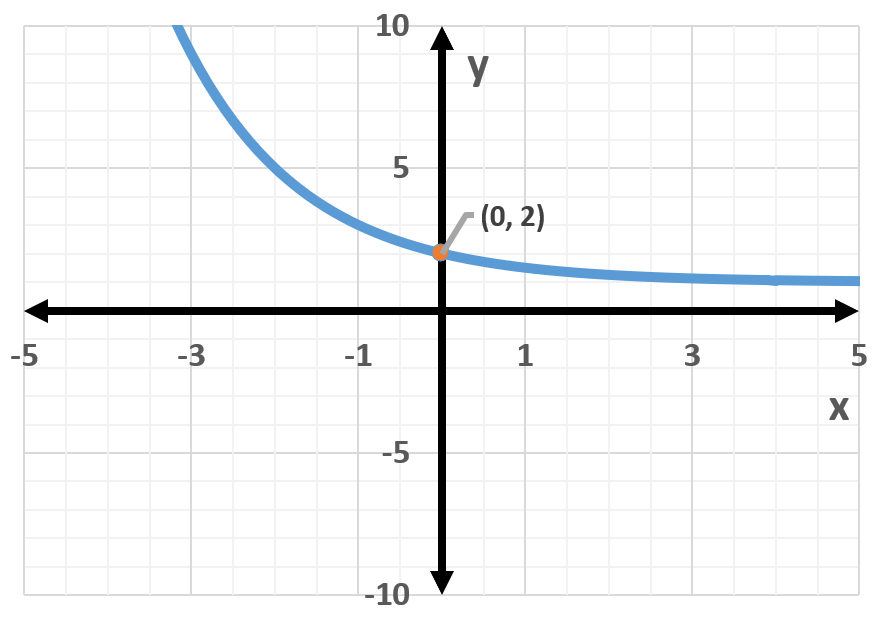Table of contents
- 0. Review of Algebra4h 16m
- 1. Equations & Inequalities3h 18m
- 2. Graphs of Equations43m
- 3. Functions2h 17m
- 4. Polynomial Functions1h 44m
- 5. Rational Functions1h 23m
- 6. Exponential & Logarithmic Functions2h 28m
- 7. Systems of Equations & Matrices4h 6m
- 8. Conic Sections2h 23m
- 9. Sequences, Series, & Induction1h 19m
- 10. Combinatorics & Probability1h 45m
6. Exponential & Logarithmic Functions
The Number e
Problem 1
Textbook Question
In Exercises 1–4, the graph of an exponential function is given. Select the function for each graph from the following options: f(x) = 4^x, g(x) = 4^-x, h(x) = -4^(-x), r(x) = -4^(-x)+3 1. 
 Verified step by step guidance
Verified step by step guidance1
Observe the graph and note that it passes through the point (0, 2).
Identify the general shape of the graph. It is decreasing and approaches a horizontal asymptote.
Compare the graph with the given function options: f(x) = 4^x, g(x) = 4^-x, h(x) = -4^(-x), r(x) = -4^(-x)+3.
Notice that the graph has a horizontal asymptote at y = 2, which suggests a vertical shift.
Select the function r(x) = -4^(-x) + 3, as it matches the observed behavior and vertical shift of the graph.
Recommended similar problem, with video answer:
 Verified Solution
Verified SolutionThis video solution was recommended by our tutors as helpful for the problem above
Video duration:
4mPlay a video:
Was this helpful?
Key Concepts
Here are the essential concepts you must grasp in order to answer the question correctly.
Exponential Functions
Exponential functions are mathematical expressions in the form f(x) = a^x, where 'a' is a positive constant. These functions exhibit rapid growth or decay, depending on whether 'a' is greater than or less than 1. The graph of an exponential function is characterized by a continuous curve that approaches the x-axis but never touches it, known as a horizontal asymptote.
Recommended video:

Exponential Functions
Graph Characteristics
The graph of an exponential function has distinct characteristics, including a y-intercept at (0, a) and a horizontal asymptote along the x-axis. If the base 'a' is greater than 1, the function increases as x increases; if 'a' is between 0 and 1, the function decreases. The steepness of the curve is influenced by the value of 'a', with larger bases resulting in steeper growth.
Recommended video:
Guided course

Graphs and Coordinates - Example
Transformations of Functions
Transformations of functions involve shifting, reflecting, or stretching the graph of a function. For example, a negative exponent indicates a reflection across the y-axis, while adding a constant shifts the graph vertically. Understanding these transformations is crucial for identifying the correct function that matches a given graph, as they alter the basic shape and position of the exponential function.
Recommended video:

Domain & Range of Transformed Functions
Related Videos
Related Practice







